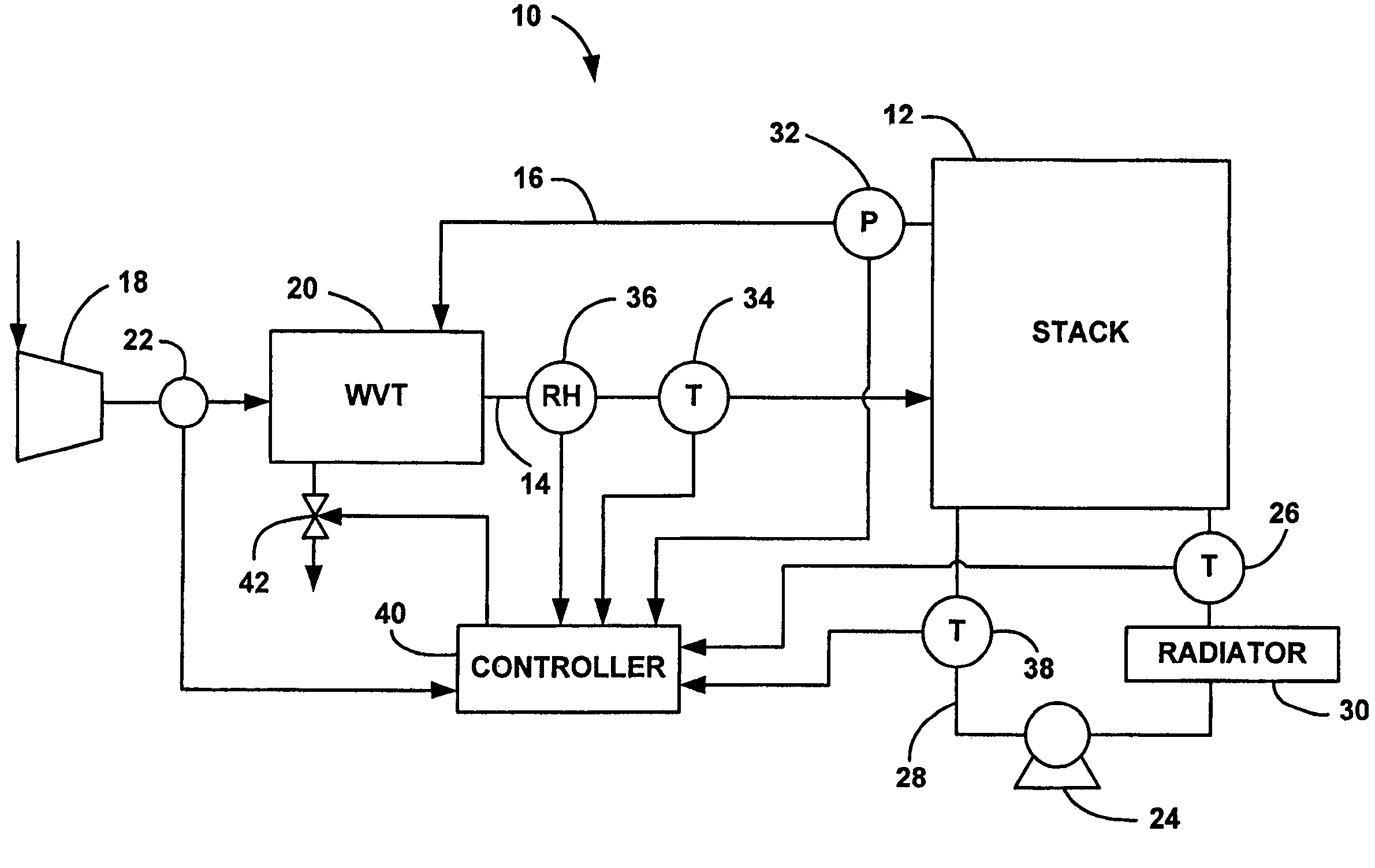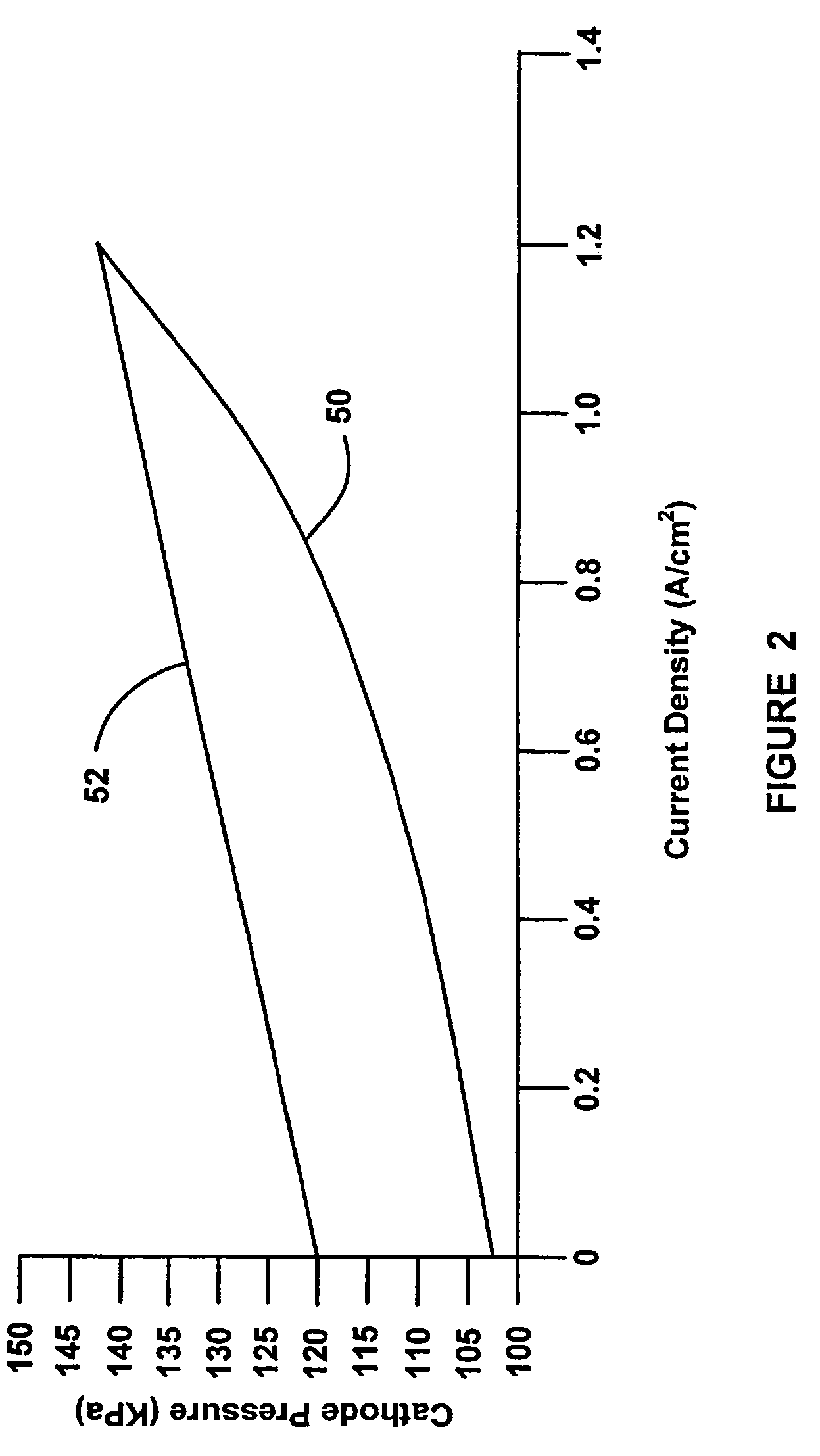Multiple pressure regime control to minimize RH excursions during transients
a technology of transients and pressure regimes, which is applied in the direction of cell components, electrochemical generators, cell component details, etc., can solve the problems of limiting the life of the membrane, affecting the efficiency of the system, and affecting the relative humidity so as to improve the relative humidity control of the cathode outlet gas, reduce the parasitic effect of the compressor
- Summary
- Abstract
- Description
- Claims
- Application Information
AI Technical Summary
Benefits of technology
Problems solved by technology
Method used
Image
Examples
Embodiment Construction
[0020]The following discussion of the embodiments of the invention directed to a control system for a fuel cell stack that controls the cathode outlet gas relative humidity by changing the cathode pressure operating range during power transients is merely exemplary in nature, and is in no way intended to limit the invention or its applications or uses.
[0021]FIG. 1 is a schematic block diagram of a fuel cell system 10 including a fuel cell stack 12. The stack 12 includes a cathode input line 14 and a cathode output line 16. A compressor 18 generates a flow of air for the cathode side of the stack 12 that is sent through a WVT device 20 to be humidified. A mass flow meter 22 measures the flow rate of the air from the compressor. The humidified air is input into the stack 12 on the line 14, and humidified cathode exhaust gas is provided on the output line 16. The cathode exhaust gas on the line 16 is sent through the WVT device 20 to provide the water vapor for humidifying the cathode ...
PUM
| Property | Measurement | Unit |
|---|---|---|
| time | aaaaa | aaaaa |
| cell voltage potential | aaaaa | aaaaa |
| pressure | aaaaa | aaaaa |
Abstract
Description
Claims
Application Information
 Login to View More
Login to View More - R&D
- Intellectual Property
- Life Sciences
- Materials
- Tech Scout
- Unparalleled Data Quality
- Higher Quality Content
- 60% Fewer Hallucinations
Browse by: Latest US Patents, China's latest patents, Technical Efficacy Thesaurus, Application Domain, Technology Topic, Popular Technical Reports.
© 2025 PatSnap. All rights reserved.Legal|Privacy policy|Modern Slavery Act Transparency Statement|Sitemap|About US| Contact US: help@patsnap.com



